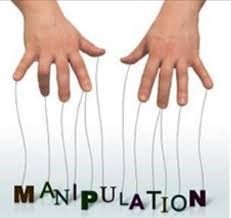-- Published: Wednesday, 15 January 2020 | Print | Disqus
By: Stefan Gleason, Money Metals Exchange
The U.S. Treasury Department announced Monday that China is no longer on a list of countries deemed to be “currency manipulators.” The timing was awfully convenient, coming just ahead of an expected Phase One trade deal between the two powers.
Nobody actually believes China has stopped manipulating the value of its yuan versus the U.S. dollar.
But the Trump administration is apparently willing to accept a certain degree of currency rigging in exchange for other concessions on trade.
It’s not as if the U.S. government has a stellar record when it comes to heeding principles of free and fair currency markets. It (through the Exchange Stabilization Fund and other vehicles) is constantly trying to manage the value of the dollar versus the currencies of trading partners, too.
It’s not as if equity markets, interest rate markets, and precious metals futures markets are free from manipulation, either. Price rigging schemes of various sorts – ranging from small-scale “spoofing” to large-scale suppression – occur practically around the clock.
Occasionally, there are prosecutions.
Last year, for example, the U.S. Department of Justice criminally charged several JPMorgan traders for fraud and racketeering in a conspiracy to rig precious metals markets.
Yet previous criminal investigations by federal regulators have often gone nowhere, with evidence of manipulation inexplicably disregarded.
Congressman Alex Mooney from West Virginia has asked Attorney General Bill Barr to look into price rigging, particularly within the silver market which is regularly subjected to artificial volatility induced by large institutional traders (i.e., bullion banks) with outsized positions.
The manipulation may be occurring on an even larger scale if the Federal Reserve or the U.S. government or its agents are involved. It is widely suspected but difficult to prove since the Fed operates in secret and the government isn’t keen on investigating itself.
Regardless of what the motivation may be, it is an objective fact that the supply of futures contracts surged last year in both gold and silver markets.
Open interest in gold was up over 70%. Put another way, the supply of paper gold rose by 70% or 33 million new ounces – absorbing much of the growing demand for the metal and preventing prices from rising even more than they did.
Even as vastly more contracts for gold exchanged hands, the amount of physical gold available for delivery in vaults barely budged. Thus, while gold itself is scarce and highly sought after, futures contracts can seemingly be generated in unlimited quantities to divert buyers away from the real thing.
According to Dave Kranzler of Investment Research Dynamics, “Since the introduction of paper gold, the Comex – gold and silver trading – has evolved into what can only be described as a caricature of a ‘market.’ The open interest in gold contracts is nearly 10 times the amount of physical gold reportedly held in Comex vaults. It's 60 times the amount of ‘registered’ gold, the gold designated as available for delivery.”
Some gold bugs expect an eventual COMEX default – a force majeure, a run on the bank for physical metal that sends prices explosively higher. While such a scenario is possible, it is not necessarily probable.
The powers that be have been adept at playing the paper charade to their advantage for decades. They may be unscrupulous or even evil, but they are not dumb.
The campaign popularized briefly a few years ago of “Buy Silver, Crash JPMorgan” was based on a misunderstanding of the mega banks’ short exposure to silver.
The banks aren’t making an enormous long-term bet that silver will fall and risking everything on it. They are in the markets with complex hedges and trading algorithms that can generate micro-profits on minute-by-minute moves up or down.

Yes, the banks can suppress rallies and trigger sell-offs by going heavily short – even selling more ounces than they could possibly deliver. But the reality is, they will never have to settle their contracts in physical metal.
Financial institutions are playing in a cash market tied to precious metals, not the actual physical market.
The best physical investors can hope for is that the cash/paper markets for gold and silver lose credibility and diverge from real-world pricing for industrial users and wholesale bullion buyers.
Or, alternatively the powers-that-be could avoid such an embarrassment by standing aside while prices reset higher, and then choose a new level at which to try to hold the line.
Ultimately, however, the supply of physical precious metals cannot be manipulated into existence any bank or government. Either it’s real and it’s available or it isn’t.
The key to defeating market riggers – or at least rendering their paper shenanigans irrelevant – is for buyers to avoid derivative markets and insist on obtaining physical metal from physical sources.
Stefan Gleason is President of Money Metals Exchange, a precious metals dealer recently named "Best in the USA" by an independent global ratings group. A graduate of the University of Florida, Gleason is a seasoned business leader, investor, political strategist, and grassroots activist. Gleason has frequently appeared on national television networks such as CNN, FoxNews, and CNBC and in hundreds of publications such as the Wall Street Journal, The Street, and Seeking Alpha.
| Digg This Article
-- Published: Wednesday, 15 January 2020 | E-Mail | Print | Source: GoldSeek.com

